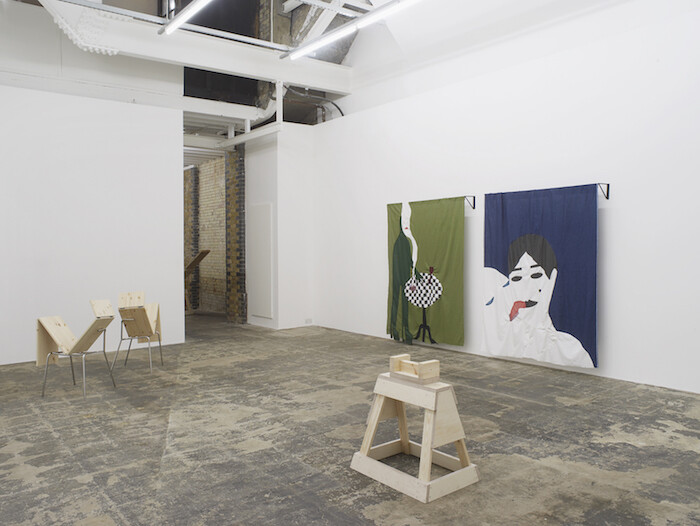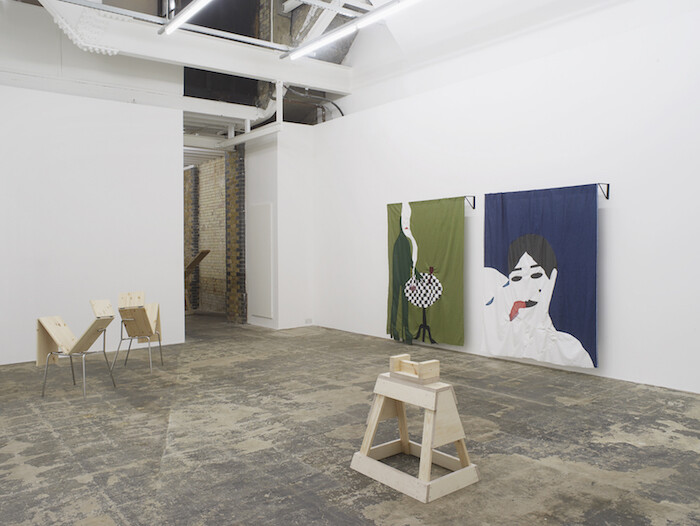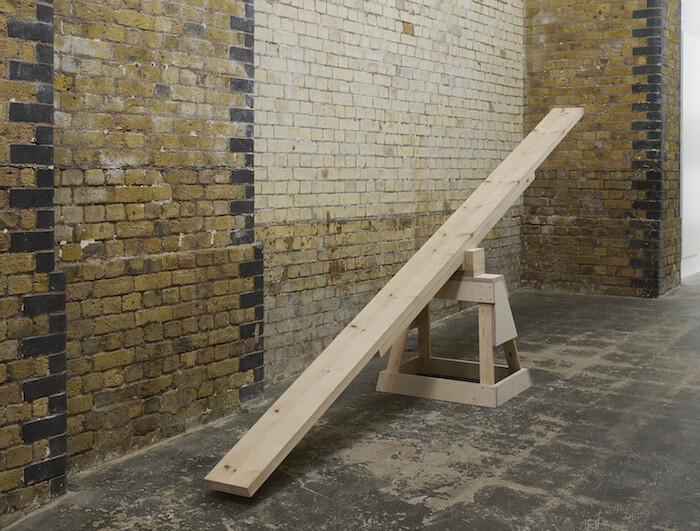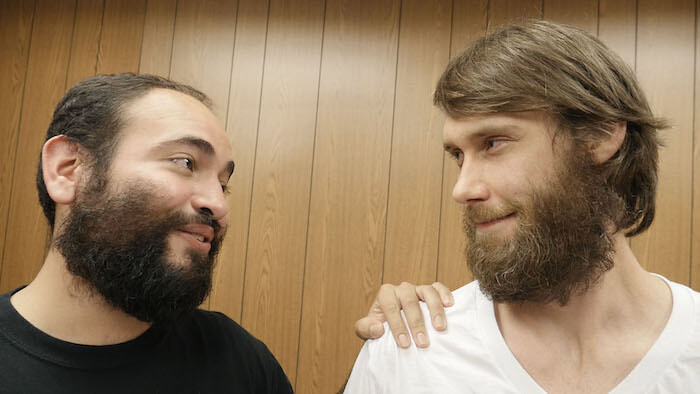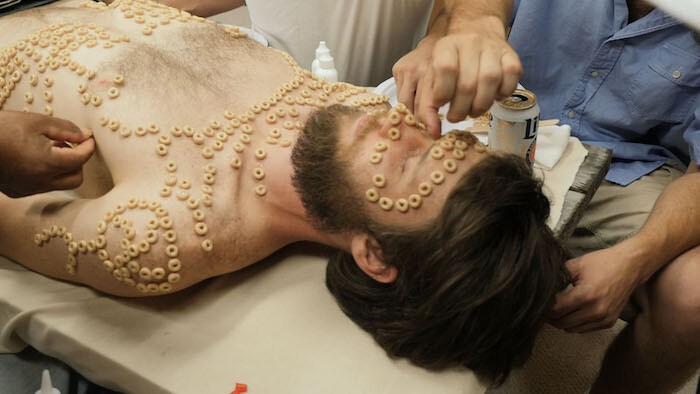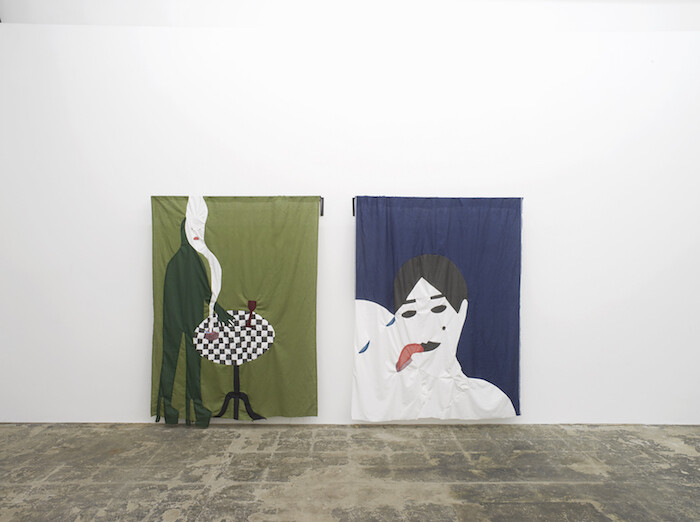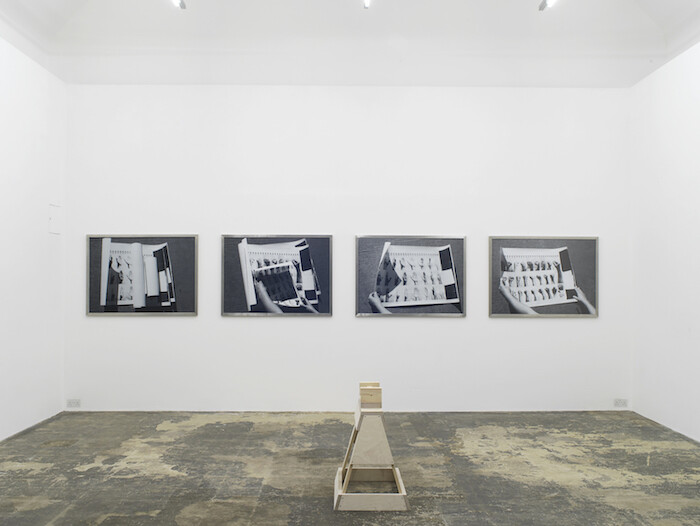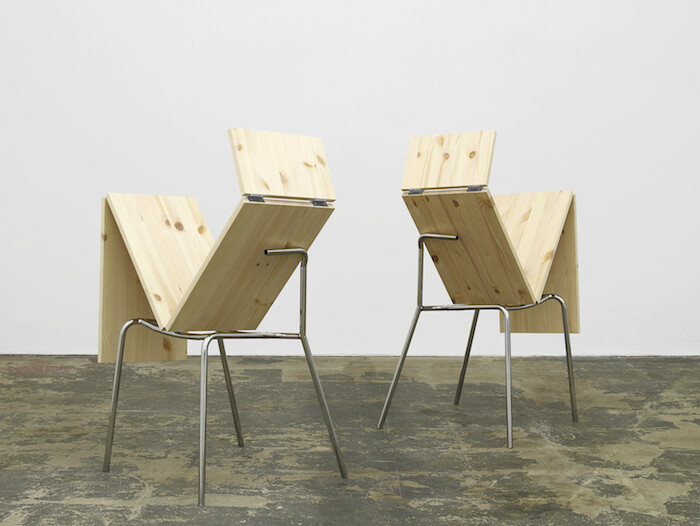In her 1974 memoir Handbook in Motion, Simone Forti describes how, when she moved from San Francisco to New York in 1959, the city seemed a “maze of concrete mirrors.”1 New York didn’t just disorient: it “shocked” her. She took solace from the city’s alienating architecture by rooting herself in her body, paying close attention to the effects of gravity on her anatomy. “I tuned into my own weight and bulk as a kind of prayer,” she writes. Forti’s 1960s works, structured by game-like sets of rules, were highly influential for Yvonne Rainer, the Judson Dance Theater, and others. In the early pieces, performers interact with simple props, such as gym rope or plywood boxes. These “dance constructions”—Forti’s own usefully ambiguous term—blur the distinctions between choreography, performance, and minimalist sculpture. That Forti’s work resonates in 2017 speaks both of the lasting relevance of her themes—the friction between individual actions and collective rules, for example—and of the dynamism and flexibility of the works themselves, interpreted afresh with each performance.
Forti’s See Saw (1960) is an integral art-historical, thematic, and aesthetic reference point in “When my eyes saw and when my ears heard,” a group show at Hollybush Gardens that explores how bodies work within, and against, given rules (gravity being just one). In collaboration with Forti, Stockholm-based artist Luca Frei has directed a new iteration of the piece (Simone Forti’s See-Saw, 2017), performances of which bookend the exhibition. Frei’s version is faithful to the original work, in which a man and a woman sit, walk, dance, and crawl across a plank as it tilts on its fulcrum, but introduces a second saw horse and extends the performance across the width of the gallery rather than confining it to the central prop. In Forti’s words, “the slightest change of position by either performer, affects the balance of the entire setup.”2
Precarity and social interdependence feature in Kenneth Tam’s Breakfast in Bed (2016), which makes for uncomfortable, if frequently amusing, viewing. The half-hour-long video documents a series of activities performed by a group of men in a wood-paneled room, roughly the size of a shipping container. The claustrophobic environment intensifies the awkwardness of this male bonding session, as bearded dudes partake in activities common to children’s parties (playing tag, dancing in a circle) and swap insights into one another’s physical appearance. The men appear to be enjoying themselves. They are relaxed and expressive. And yet there is no release from their purgatorial intimacy, emphasized by the fact that the film runs on a loop. Is Breakfast in Bed a comment on patriarchy (oppressive, inescapable)? Or does it offer a laboratory in which to dismantle the male psyche, encouraging men to unlearn repressive behaviors? The meaning is ambiguous. Perhaps it’s just a game.
“When my eyes saw and when my ears heard” has a pared-back, Spartan aesthetic. Bare walls and bitumen-blackened floors become exhibition features in their own right, enhancing the starkness of the sculptural pieces and enclosing the two moving image works in dark, cell-like rooms. In the gallery’s largest room, two walls are left blank. The chilly, unbroken abundance of white space recalls the austerity of minimalism, a movement that Forti’s process-based work is often understood in relation to. Yet the gallery’s exposed brick walls and lofty ceilings generate an institutional atmosphere that feels appropriate to the theme of social control hinted at in several works.
Two Adam Christensen fabric works (both 2017) hang from wall-mounted steel railings in the main room. Smoke in My Eye shows a tall, cartoonish figure in high heels standing beside a table, staring out, in glum resignation, as cigarette smoke flows upwards in a riverine cloud and across their face. A Blank Stare depicts an ambiguous embrace: a woman stares the viewer, her closed lips tongued (forcibly or amorously, it’s hard to tell) by a bald companion. Christensen’s pieces offer textural contrast to the hard surfaces seen elsewhere in the show. Blow on the fabric, and it ripples lightly. Lean behind it, and you can see the knotty tangles of fine threads of the reverse side. The exposed, delicate construction emphasizes the diaristic intimacy of the scenes—an intimacy that carries through to Christensen’s performances, which combine readings of confessional texts with music. These fabric works remind us that domestic spaces can also be theatrical ones: places in which we perform. Manon de Boer’s 16mm film An Experiment in Leisure (2016) features various artists reflecting on the work of psychoanalyst Marion Milner. This languorous, overtly meditative film lacks the arresting quality of the other works on display, yet the thematic parallels are clear enough: “So we actually rehearse in the sense of repetition,” one subtitle reads, “repeating the text over and over.”
In her recent book on Simone Forti, Meredith Morse argues that Forti’s practice has “one foot inside art history’s frameworks and the other outside it.”3 The same might be said of Charlotte Prodger, whose “Sophie With Sheets” (2009-2016) provides a series of fairly literal art-historical frameworks. These four black-and-white photographs show a woman’s hands unfurling sheets, each page printed with sequential, Muybridge-esque photographs of hands bunched into fists, open-palmed, and so on. Delving into the archive is itself depicted as a series of actions, movements through which the past is re-framed. Directly opposite is a pair of sculptures by Frei (Idle, 2017). The works comprise tubular steel chair bases that support hinged and folded pine boards, rudimentary wooden structures resembling uncomfortably seated figures. Though inspired by the playful fluidity of See-Saw, Idle expresses physical restraint and restriction, even sadistic forms of punishment.
Forti describes her first encounter, in 1960, with John Cage’s chance-based scores as a revelation: “control [was] a matter of placement of an effective act within the interplay of many forces, and of the selection of effective vantage points.”4 This web of forces enmeshes the universal (gravity, duration) with the individual (anatomy, mood) and everything in between. Though rooted in the artistic milieu of 1960s New York, Forti’s work offers enduring models for negotiating this conflicted, ever-shifting terrain, and for carving out spaces of self-determination within systems of social and political control. In a year defined by mounting debates over what constitute “effective acts”—nonviolent protests in particular—the questions of what gestures we make, what poses we hold, and who sets the rules of the game feel as pressing today as they did during Forti’s shocking early years in New York.
Simone Forti, Handbook in Motion (New York: Contact Editions, 1974), 34.
Ibid., 39.
Meredith Morse, Soft is Fast: Simone Forti in the 1960s and After (Cambridge: MIT Press, 2016), 6.
Simone Forti, ibid., 36.
